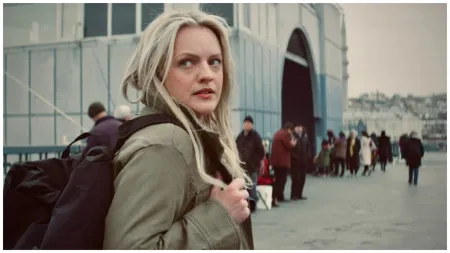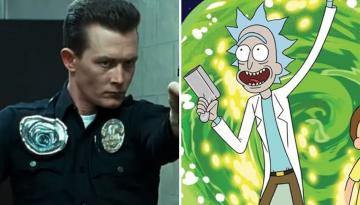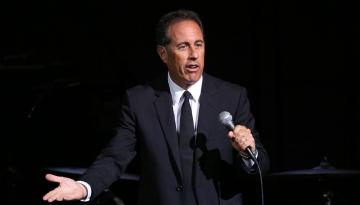Sanjay Leela Bhansali’s magnum opus Heeramandi will start streaming on Netflix on May 1. With lavish sets, regal costumes and brave, beautiful women, this series promises the Bhansali maximalist aesthetic in all its glory. The latest promos, featuring the individual characters, also hint at Bhansali’s long-standing interest in troubled or tragic love stories. The inherent injustice in being denied the right to love someone, or separating two people deeply in love, is a narrative idea that Bhansali explores in varied settings.

View this post on Instagram
A post shared by Heeramandi: The Diamond Bazaar (@heeramandinetflix)
The filmmaker often blends the emotional tumult of this idea with stories of courtesans and sex workers, whose lives he views with empathy and admiration. He has explored the tragic duality of their lives in multiple films like Saawariya, Devdas and Gangubai Kathiawadi. While on the one hand, a courtesan or a sex worker offers men entertainment, passion and sexual satisfaction, in Bhansali’s world, they are doomed to never find true love or be included in socially created institutions like marriage and family. As Paro tells Chandramukhi in Devdas, “Tawaif ki takdeer mein shauhar nahin hote.” (Courtesans are not destined to have husbands). To which Chandramukhi poignantly replies, “Tawaif ki toh takdeer hi nahin hoti thakurain.” (Courtesans don’t have destinies, my lady).
In Gangubai Kathiawadi, Ganga is sold into prostitution by her boyfriend. Initially shattered, she rises to a position of power through her resilience and leadership skills. In the narrow, defamed lanes of Kamathipura, Gangu falls in love with a young tailor, Afshan, and they begin what will sadly be a short-lived romance. When Gangu has to choose between the man she loves and the woman whose future she wants to shape, she sacrifices her feelings for the greater good. In the heartbreaking scene where she takes Roshni’s proposal for Afshan with a platter full of dowry, Afshan’s uncle asks Gangu, “Ek kothewali humare ghar ki bahu kaise ban sakti hain?” (How can a prostitute become our daughter-in-law?). Gangu looks at Afshaan and repeats the same words as a statement to him, indirectly telling him that even if they love each other, his family and society will never allow him to marry a former prostitute.
View this post on Instagram
A post shared by Alia Bhatt 💛 (@aliaabhatt)
But it’s not just Chandramukhi, Gangu or even Gulab ji in Saawariya who are denied their happily ever after. Starting from his very first film Khamoshi, Bhansali explored the idea of love, challenging the norm and questioning authority. Annie falls for Raj, a Hindu singer who doesn’t have a similar family background to hers. Annie and Raj’s love story is rooted in their common passion for music, but when she gets pregnant out of wedlock, her parents cut off ties with her and don’t attend their only daughter’s wedding. Though the family reconciles eventually, Annie and Raj have to brave many storms.
In Hum Dil De Chuke Sanam, the bright and beautiful Nandini falls passionately in love with Sameer, an Italian-Indian man who is her father’s student. When her otherwise doting family finds out, her authoritarian father forces the young lovers to part. She is married to Vanraj who decides to reunite his heartbroken wife with the man she loves and travels with her to Europe to find Sameer. However, in a twist of fate, and perhaps for the satisfaction of an Indian audience, Nandini chooses to stay with her selfless spouse and Sameer is left heartbroken again.
ALSO READ ‘Shah Rukh Khan recently said he wants to buy a plane; I am happy he still has a wish list’: Kamal Haasan on his unfulfilled desires
Young love clashes with violence and hatred in Goliyon Ki Raasleela-Ram Leela. In Bhansali’s take on a Romeo and Juliet-inspired tragic love story, Ram and Leela belong to two warring castes in a fictional town in Gujarat. Generations of animosity fail to keep the two youngsters from falling in love, but their budding romance is unable to face the collective wrath of their families. Ram and Leela die by suicide together, unaware that their warring clans have finally decided to give up arms and reconcile with each other. The fact that these events unfold parallelly only deepens the tragedy of their ill-fated romance.
Bajirao Mastani, Bhansali’s first historical romance, was a fictionalised account of Peshwa Bajirao’s ill-fated relationship with Mastani, the daughter of a Hindu king and his Muslim mistress. Their love story in many ways is doomed from the get-go, not just because of his family’s refusal to accept a half Muslim girl into their strict Brahmanical way of life, but also because Bajirao is a married man who is supposed to practice monogamy. Bhansali portrays their love story as a man-made tragedy, where religious intolerance and an orthodox society didn’t allow Bajirao and Mastani’s relationship to get the respect it deserved. Bajirao’s first wife Kashi is also left with a broken heart and the director portrays her sense of betrayal and grief with the same sensitivity that he shows towards Bajirao and Mastani.
But it’s not always families or morality that play villains in Bhansali’s films. Physical limitations or disabilities prevent Ethan Macarenhas in Guzaarish and Michelle McNally in Black from finding romantic partners or entering a long-term relationship. Ethan breaks up with his girlfriend after an accident leaves him paralysed. Though he and his nurse Sofia confess their love for each other and marry, it is only for a day, before she helps him end his life in an act of mercy killing.
Michelle has multiple physical challenges and is unable to hear, see or speak. In a haunting scene from Black, Michelle tells her teacher Sahai that she may never know what it is like to love a man. Rani Mukerji brilliantly portrays Michell’s frustration at wanting physical intimacy and romance but realising she may never have it. She begs her teacher, with palpable anguish and desperation to kiss her once, so that for a brief moment she can feel complete as a woman. Love, lust and longing, as Bhansali demonstrates, are functions of the mind and not the body. But when the body itself becomes an obstacle to the fulfilment of these primal needs, it’s painful on a visceral level.
Our desire to love and be loved, to find a partner who as Susan Sarandon says in ‘Shall We Dance’, will be a witness to our lives, is the most important marker of being a human being. In Bhansali’s world, love is truly all we have and if we are denied the right to feel it or find it, there can be no greater tragedy.Click for more updates and latest Bollywood news along with Entertainment updates. Also get latest news and top headlines from India and around the world at The Indian Express.
Disclaimer: The copyright of this article belongs to the original author. Reposting this article is solely for the purpose of information dissemination and does not constitute any investment advice. If there is any infringement, please contact us immediately. We will make corrections or deletions as necessary. Thank you.







